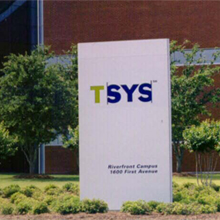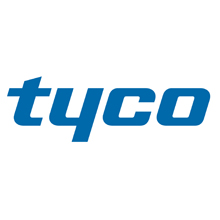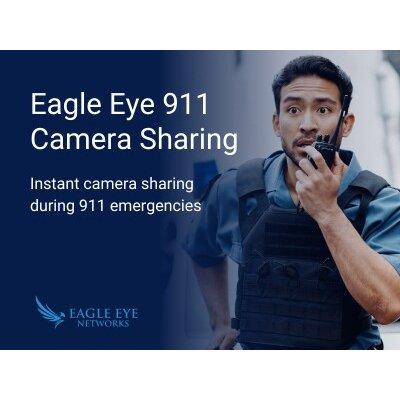 |
| Each of the facilities with Intellex unit can review video from any of the similarly equipped sites by using the TSYS WAN |
In the middle of the night, something breaks an infrared beam protecting the perimeter of a critical data center for the United Kingdom operations of TSYS, the largest third-party processor of international card payments. Immediately, halogen lamps on top of the building light the area. The access control system records an alarm and displays the camera with a view of the site on monitors thousands of miles away in Georgia. There, security associates can determine if police response is required. In this case, it was nothing more than a cat on its nightly prowl.
Taking full advantage of the latest advances in systems integration, TSYS can provide a high level of security for its employees and property – from a continent away or just across the street.
In January of this year, TSYS updated its access control system to Software House's C•CURE® 8000. Along with the upgrade, TSYS added C•CURE NetVue to provide a link between the access system and its recently-added American Dynamics Intellex® Digital Video Management System from Tyco Fire & Security's Video Systems. Utilising TSYS's existing Wide Area Network (WAN), video can be almost instantly matched to any access control alarm event.
Not only will NetVue allow security managers to click on access events to display video from cameras at the locations, but also video recorded on the Intellex unit will be instantly located for playback and review. Images can then be exported into any standard file format for printing a still image or e-mailing the clip.
"This system has proven to be very effective for us," said Wayne Smith, Assistant Vice President of Security Technologies for Synovus, a diverse financial services company that owns a majority interest in TSYS.
Founded in 1983, TSYS serves more than 228 million cardholder accounts for many of the largest banks and retailers in the United States and around the world. It is the world's largest processor of card payments, including credit, debit, private-label, stored-value and chip cards. Based in Columbus, Ga., TSYS operates offices in three states, Canada, Mexico, the United Kingdom and Japan.
Most of TSYS's administrative and support facilities are based in Columbus. The corporate headquarters is located at a campus facility, with more than 500,000 square feet of office space in three interconnected buildings. The campus employs about 2,200 people.
Other major facilities in Columbus include another three-building complex and two other buildings that serve as corporate data centers and a 1,000-employee call center. Another 20 support buildings in Columbus, employing from 25 to 200 people, provide space for client services, facility management, security, maintenance and human resources.
 |
| TSYS added C•CURE NetVue to provide a link between access system and Intellex digital video management system |
Buildings for programmers and systems support personnel are located in Atlanta and Jacksonville, Fla. TSYS also operates data center/client support facilities in the U.K. and Mexico. Both the U.K. and Mexican sites have parking lots that are gated and require an access card for entry, as do three parking garages located with the Columbus facilities. A 50-employee Canadian facility, used for operations support, is also included on the security system. More than 10,500 employees are protected by the combination of access control and video surveillance components.
There are no general public entries to any of the buildings on the security system. Visitors, such as vendors, are required to enter at each building's security entrance, sign in, leave identification, receive a temporary badge and then be escorted throughout the facility by a TSYS employee. Most of the larger buildings have a security associate on duty 24 hours a day. At the smaller sites, receptionists serve a security function and sign in visitors.
Employees are expected to wear their identification badges at all times while at work. Due to corporate and banking regulations, there are a number of time, date and location restrictions placed on each badge. Smith estimated there are about 750 different clearance codes administered by his department.
The security department operates four badging stations at the larger Columbus facilities. At each station, one of two full-time badging administrators take employee pictures, which are stored on the network server, and then print the badges. According to Smith, a minimum of 100 new badges is made each month, in addition to numerous deletions and clearance changes.
More than 500 video surveillance cameras, a mixture of pan-tilt-zoom and fixed models from Burle, a division of Phillips Communication, Security & Imaging of Lancaster, Pa., are used to monitor building perimeters, entries and critical operations areas. For example the card processing facility, where credit cards are made, is monitored by 80 cameras alone. Most of the cameras are connected to the security system by fiber cable. On the main campus, a mixture of fiber and coaxial cable is used to link about 70 cameras.
In most areas, Burle multiplexers and VCRs process the video. However, Smith said plans have already begun to replace the multiplexers and VCRs with Intellex units. Intellex offers multiplexing and digital recording in one unit.
Currently, there are four Intellex units being used. Three of the units are located in Columbus and one is in the UK facility. One of the Georgia units is used at a 300-child daycare center at the TSYS main campus. Each of the facilities with an Intellex unit can review video from any of the similarly equipped sites by using the TSYS WAN.
Two of the Intellex units are archived to digital audiotape (DAT) and the information is stored for up to 1 month. However, two of the newer Intellex units come with 400 GB hard drives, which allow up to six months of recording. Smith said the units are set to record only on motion within the camera field or on alarm activation from the access system. When the hard drive is full, the system begins to record over the oldest sections first.
Using the WAN, security associates located at four security stations in Columbus can view access control alarm information and video from the surveillance cameras. The UK and Mexican facilities also have their own security centers.
"We will be changing the makeup of the system with more digital recorders and other advanced equipment, but right now, we have a system that meets our needs and has performed very well" |
Within each of the Georgia security stations, security associates can monitor all of the U.S. sites on the system, as well as the building in the UK, and take action as deemed appropriate for an alarm situation. Response orders may be duplicated.
"It can sometimes be a free-for-all, but we would rather have too many responses, than none at all," Smith said.
In addition to the C•CURE 8000, the access control portion of the system includes 850 card readers, 115 Software House apC/8X (advanced processing controllers) and two Software House iSTAR™ units, with more planned for the future. The iSTAR is an intelligent, modular controller, designed to integrate various event management applications on one controller to provide ease of installation and interoperability among vital applications. Using iSTAR, all database event-directed actions can be downloaded to the controller from the host, enabling local management of events such as door lock/unlock.
Fire and burglary panels from Salinas, Calif.-based Radionics are installed and integrated into the C•CURE system. The panels are used to protect the various corporate facilities, as well as 15 executive homes in the Columbus area. Also, 11 hand geometry readers from Recognition Systems of Campbell, Calif. are installed as an extra control on access to the highly sensitive data centers.
The original access system, a C•CURE 1 Plus, was installed in 1989 and was upgraded in 1995. The switch to the C•CURE 8000 was made earlier this year to allow for the integration of the Intellex units and Radionics panels into the access system.
Smith said that with such a large system, there is always new equipment being added. TSYS maintains a four-person Security Electronics Department that handles all the wiring and other installation needs.
"We will be changing the makeup of the system with more digital recorders and other advanced equipment, but right now, we have a system that meets our needs and has performed very well," Smith said.


















